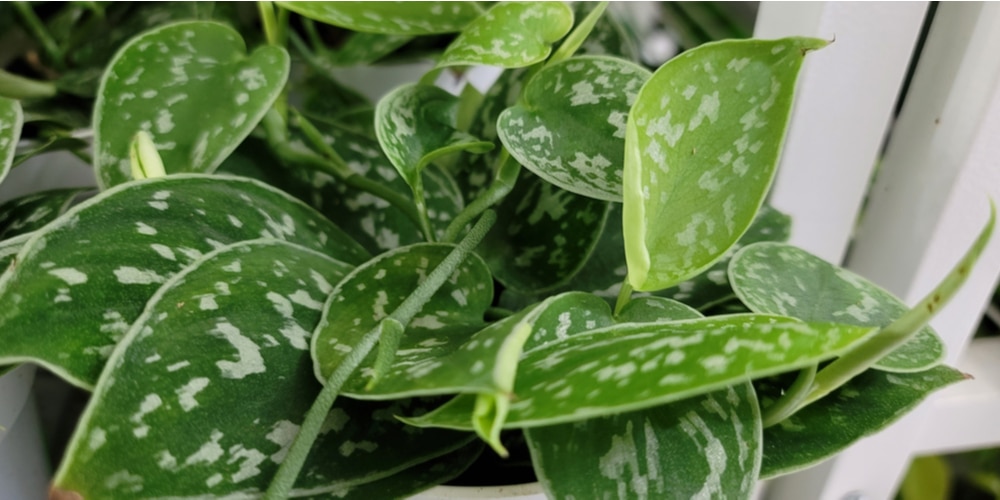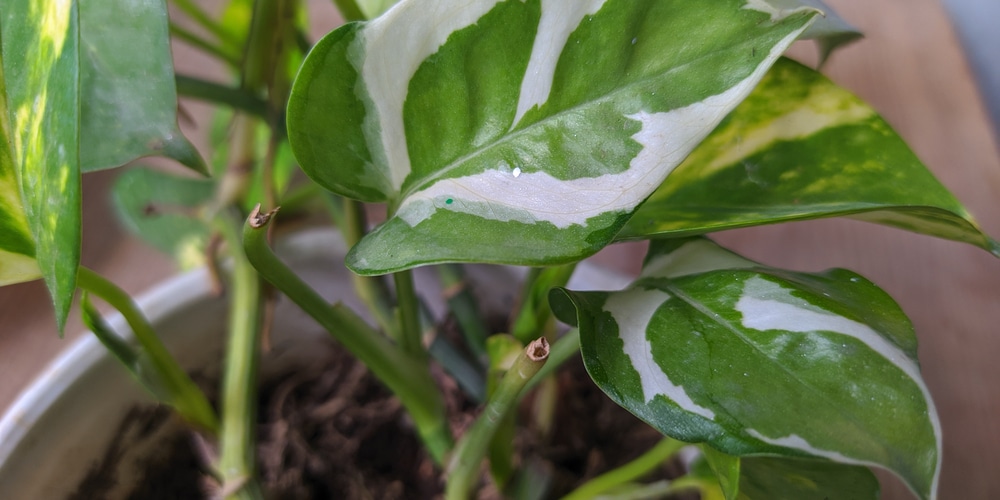Plant care requires a basic understanding of each part of a plant, from the leaves to the roots. Pothos roots are no different and are vulnerable to several ailments such as root rot and root bound.
How Do Plants Become Root Bound?

A plant that has become root bound is a plant that has outgrown the space it has been given. When the roots meet a barrier, they twist in and spiral deeper back toward the plant. Over time, the soil will deplete all of its nutrients because it can’t branch out to new spaces.
It’s also an issue in the long term because even if you repot the plant, the roots have become accustomed to going inward and will be reluctant to branch out.
Do Pothos Like To Be Root Bound?

In general, pothos will tolerate some root bound, but not much. It prefers space to spread out, which isn’t surprising. It can grow very large, up to 20 feet in length, so it needs plenty of room to anchor and draw nutrients.
Root-bound plants are also susceptible to rot since the tightly coiled roots will hold onto moisture longer. Pothos prefer for their soil to be dry between waterings.
What Plants Prefer To Be Root Bound?
Some plants thrive in these tightly-knit environments and will comfortably grow to the size of their containers. Below are a few examples:
- Hoya
- Spider Plant
- Snake Plant
- Jade Plant
- Peace Lily
Signs Your Plant Is Root Bound
Determining what’s wrong with your plant if it appears to be dying can be tough. Many people’s first instinct is to give it extra water and put it in direct sunlight, but this impulse could be incorrect. Try doing some investigation first to get the sunlight needs correct.
Wilting
Wilting is one of the first symptoms of almost any plant problem. A pothos that is wilting will lose its shape and spring. The leaves will tilt toward the vine and possibly turn yellow or brown. Wilting close to the plant’s base is a good indicator of bound roots.
Stunted Growth
If your pothos seems to have given up on getting any larger, this might also be a symptom of bound roots. The plant isn’t likely getting enough nutrition or water.
Visible Roots
You shouldn’t be able to see pothos roots poking out of the soil. If you notice thin, white tendrils across the top of the soil, it’s likely because they had nowhere else to go.
How To Fix Root Bound Plants
If you’ve done some research and determined that your pothos is root bound, don’t panic. You can probably repot the plant without lasting damage if it is still alive.
Prepare a Pot and Potting Mixture
Start by picking up a new pot that will be large enough to accommodate your pothos, and partially fill it with a fresh potting mixture.
Remove Carefully
Remove the plant from its current pot carefully. Remember that some of the roots may be attached to the pot’s walls and require a gentle hand. The best way to loosen the pot is to gently tap it on the side.
Untangle the Roots
Carefully separate the roots and remove any that have died. This process takes time, so be careful not to rush through and damage the healthy portions of the plant.
Plant
Repot the plant, and try to keep the roots spread out and pointing outward. Fill the additional space with more potting soil and cover the root ball completely.
Water
Water the plant to help it recover from the stress of repotting. Otherwise, keep it in moderate light conditions and let the soil dry before watering it again.
Overview of Pothos Roots
Pothos are great plants that generally don’t need much attention, but they do need to be occasionally repotted. Fortunately, this isn’t tough to do with the right supplies and some research. Pothos can live a happy, healthy life with proper care.